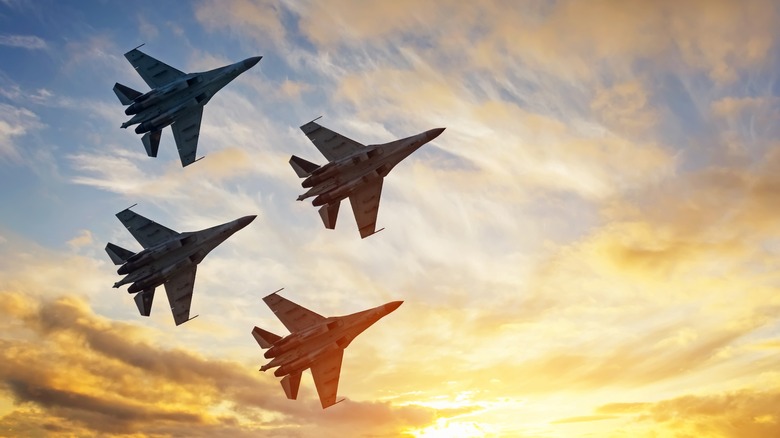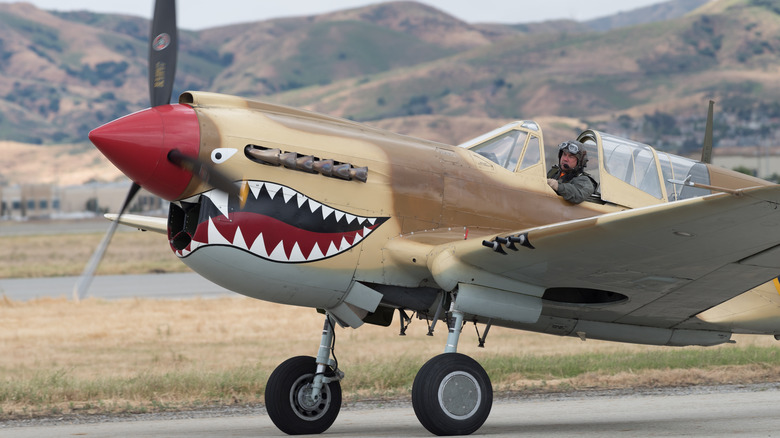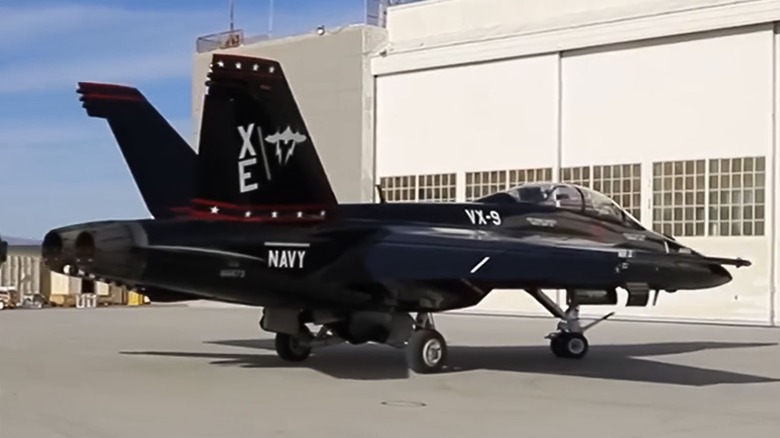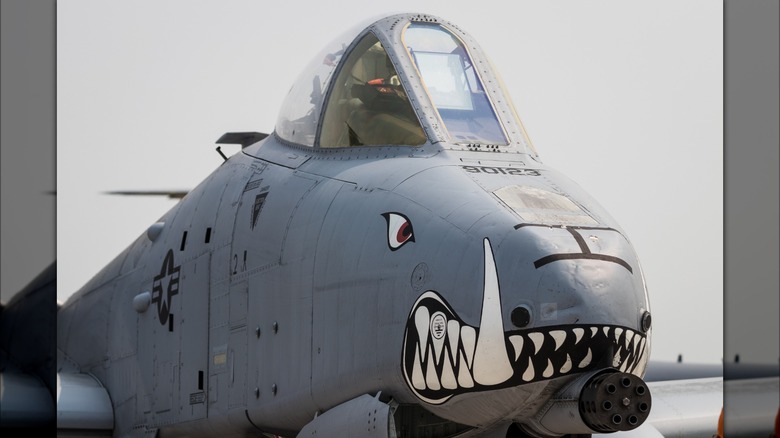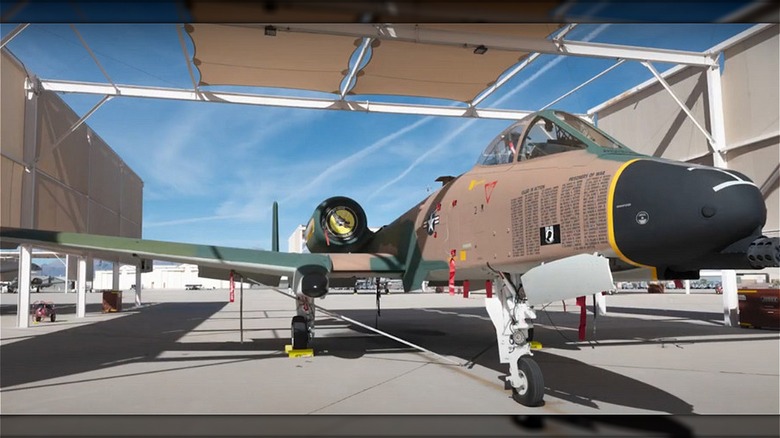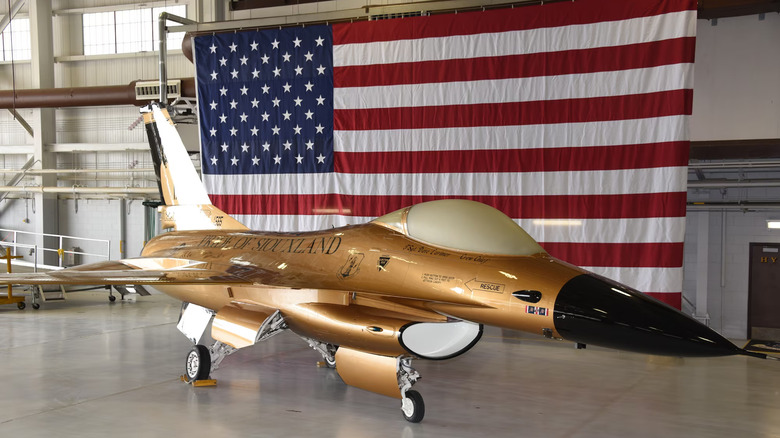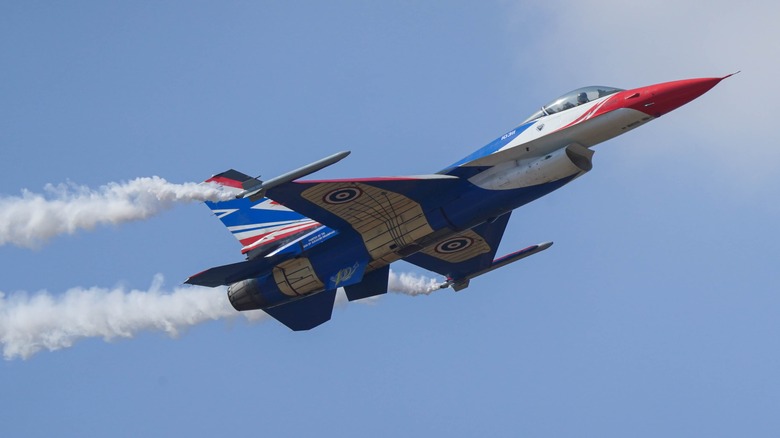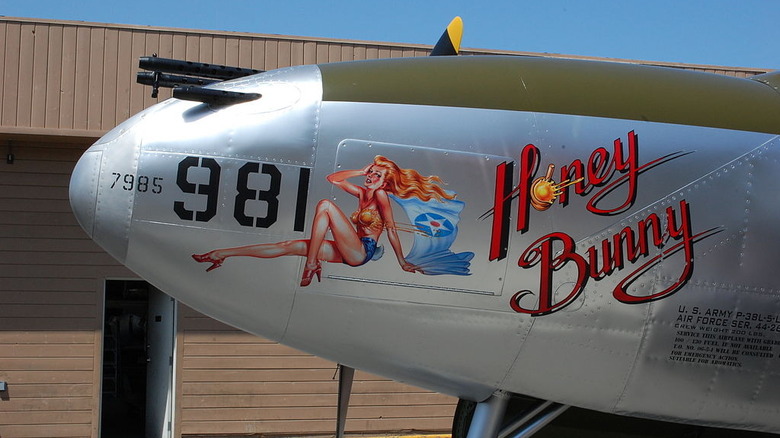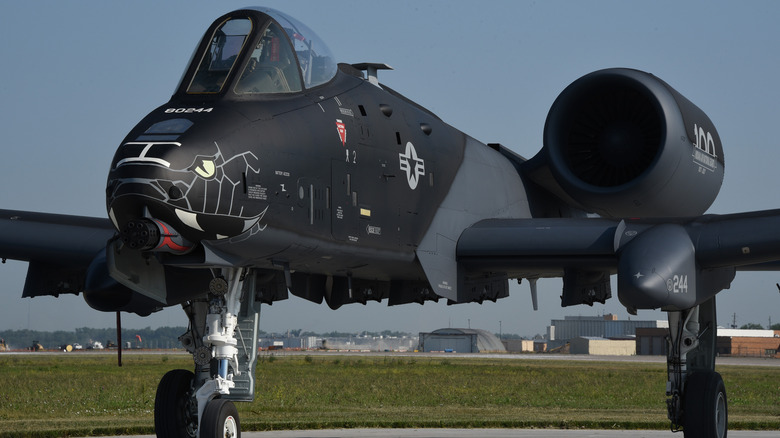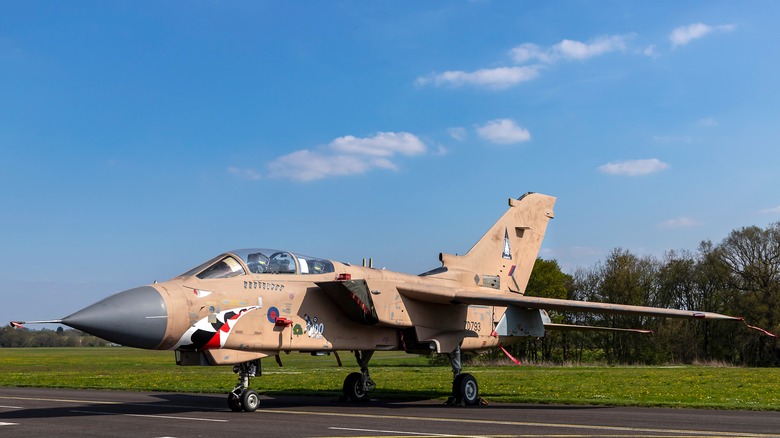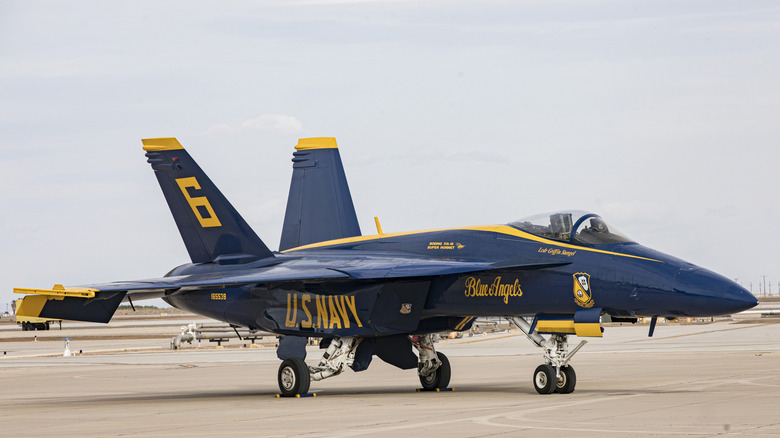10 Fighter-Jets That Look Incredible Wearing Retro Paint Jobs
In the world of aviation, where cutting-edge technology and sleek designs dominate the skies, there's a bit of charm in seeing fighter jets decorated with retro paint jobs. These aircraft serve as powerful symbols of nostalgia, transporting us back to significant moments in history, showcasing their enduring legacy and the capabilities of modern-day aviation. Each fighter jet has a distinct and compelling story, combining the allure of the past with the advanced technology of the present.
From classic color schemes reminiscent of planes in World War II battles to intricate designs representing legendary squadrons and pilots, each retro paint job carries a meaningful history. Yet, these fighter jets are not just relics of the past; they continue to actively serve in modern military operations. Their timeless designs and practical adaptability speak to their ongoing relevance in warfare today.
Join us as we explore the skies and look at 10 fighter jets that look incredible wearing retro paint jobs. From the visual allure of iconic units to the historical significance of each aircraft and its important missions, it's easy to appreciate the rich tapestry of aviation history where the past and present intersect in a display of power and pride.
P-40 Shark Face
The shark face paint job has emerged as one of the most iconic retro designs in aviation history. Originating with the First American Volunteer Group, famously known as the Flying Tigers, during World War II, this striking image has endured over time.
The Flying Tigers were a skilled fighter group dispatched to help the Chinese combat the Japanese under U.S. forces operating with Chinese authority. While they weren't the first to adopt the shark face, they played a pivotal role in popularizing it during the war.
Operating the P-40 Warhawk, the Flying Tigers achieved an impressive 20 to one kill ratio, downing 297 enemy aircraft. Their mission involved slowing down the Japanese forces' advance into Chinese territory. The P-40, despite its limited maneuverability compared to Japanese fighters, excelled in diving and high speeds, giving the Tigers a strategic advantage.
Inspired by the U.K. Royal Air Force's use of the shark face design, the predominantly U.S. Navy, Army, and Marine pilots of the Flying Tigers incorporated the intimidating shark face paint on their P-40s. As their reputation grew, so did the popularity of the toothy shark design, boosting morale among friendly forces and instilling fear in enemy pilots.
Even today, the shark face paint job remains a timeless symbol of aviation and fighter jet history, and it continues to adorn aircraft worldwide, paying homage to the Flying Tigers and their remarkable impact during World War II.
F/A-18 Super Hornet
It may be simple in design, but it's a color scheme that's not often utilized — perhaps the Rolling Stones said it best, "Paint it black." The F/A-18 Super Hornet features a distinctive glossy black paint job, harking back to classic fighter jets like the Vandy-1. This black color scheme pays homage to the VMCJ-2 air squadron, known as the Playboys, which adorned their planes with an all-black look and a prominent white bunny on the tail, reminiscent of the iconic Playboy Magazine.
Over the years, the all-black paint job and the bunny insignia became popular tail decorations for black fighters. Interestingly, the Playboy Corporation even provided bunny stencils to the Marines, requesting that if they used their name and logo, it be done accurately. The F/A-18 Super Hornet piloted by the Air Test and Evaluation Squadron Nine (VX-9) pays tribute to this paint scheme and various squadrons that used it, adopting the nickname and iconography of the Vampires.
An all-black color scheme may be simple, but even this color scheme has a long tradition in aviation history. This retro-inspired scheme honors the past while emphasizing the Super Hornet's advanced technology and modern capabilities, showcasing its precision and power in military aviation.
A-10 Warthog
The legendary A-10 Warthog embraces the classic paint job of the 405th Fighter Squadron's original paint scheme.
The 405th Fighter Squadron played a vital role during the war, participating in operations that spanned from D-Day to the conclusion of the European ground war. One of its most remarkable feats was the destruction of an entire convoy of German military tanks and vehicles. The tactical prowess involved targeting the first and last vehicles in the convoy, thereby trapping the rest.
In a powerful statement about preserving their heritage, Maj. Tom Silkowski of the 190th Fighter Squadron emphasized the significance of adorning the A-10 Warthog with the markings of the historical P-47s. He said, "Painting this Hog in the markings of our World War II P-47s is a statement: we value our heritage, and honoring the achievements and sacrifices made by the men of the 405th Fighter Squadron is not only important, it's our duty."
The A-10 Warthog's retro paint job artfully blends its rugged design with historical significance, underscoring its ongoing relevance in modern military operations. The white and gray camouflage pattern serves as a respectful tribute to the airmen who fought courageously during World War II.
POW A-10 Warthog
Introducing the latest homage to history, the iconic A-10 Warthog has received another retro paint job, paying tribute to POWs. This A-10 now flaunts the classic green and tan paint scheme used during the Vietnam War. However, what truly sets this Warthog apart is the special stenciling on its nose. Proudly displayed are the names of those who lost their lives or went missing in action from the 355th Tactical Fighting Wing.
The 355th Tactical Fighting Wing is based in Davis-Monthan Air Force base in Arizona where they train pilots to fly the A-10. During the Vietnam War, the air wing was transferred to the Royal Thai Airbase where they launched over 100,000 sorties over Vietnam.
The chosen paint scheme is a nod to the past, replicating the distinctive camouflage used in Vietnam and surrounding areas. Notably, this experimental pattern was designed to create visual distortions from above. Today, this paint scheme is seldom seen, except in the realm of model airplane enthusiasts or in heritage paint jobs such as this one. Contemporary paint jobs, on the other hand, predominantly adopt single-color designs, focusing on disrupting electronic tracking.
F-16 Fighting Falcon
The F-16 Fighting Falcon, adorned in a dazzling all-gold paint job, undoubtedly catches the eye, even though it may not be the most practical choice for a fighter jet. This extraordinary paint scheme traces its origins to Col. Dennis Swanstrom's brilliant idea to commemorate the 50th anniversary of the Iowa National Guard in a grand manner.
The popularity of this unique design prompted the Iowa National Guard to recreate the celebration for its 75th anniversary, once again choosing the all-gold motif for the F-16. For the 75th anniversary edition, the F-16 received some additional touches to make it truly stand out. The inclusion of Col. Dennis Swanstrom's name in the paint job, along with a glossy black nose (radome), added a modern touch, while the inscription "Pride of Siouxland" paid homage to the Iowa Air National Guard's 50th-anniversary jet unveiled in 1996.
These heritage paint jobs hold great significance as they serve as a fun and meaningful way to honor the dedicated service of men and women in the military. They also play a crucial role in building morale within the community and among the ranks. This all-gold F-16 symbolizes excellence in aviation and proudly showcases the skill and dedication of its pilots.
Royal Thai Air Force Centennial Falcon
The Royal Thai Air Force Centennial Falcon boasts a remarkable paint scheme specially crafted to commemorate the RTAF's 100th anniversary. Renowned Thai artist Sukasom Hiranphan, designed this fun look.
The focal point of the paint scheme is based on the Nieuport 17 biplane, which was the first aircraft ever flown by the RTAF. This elegant depiction graces the underside of the F-16A fighter jet. On the upper fuselage, a striking combination of blue, white, and red colors pays homage to the Thai national flag.
The Centennial Falcon's unveiling took place in 2013, captivating audiences at air shows and events around the world. Its unique design serves as a powerful tribute to the Royal Thai Air Force's illustrious history and enduring contributions to the field of aviation.
Part of the 100th-anniversary celebration honors the founding fathers of Thai aviation: Air Marshal Phraya Chalermakas, Group Captain Phraya Vehasayan Silapasit, and Group Captain Phraya Thayanpikart. These three officers are credited with playing pivotal roles in kicking off Thailand's air defense program. To honor their contributions, the retro paint job on the Centennial Falcon showcases the biplanes that were instrumental in their program's early days.
Overall, the Royal Thai Air Force Centennial Falcon is a magnificent and heartfelt tribute to the RTAF's enduring legacy and the visionaries who paved the way for Thai aviation's remarkable journey.
P-38H Lightning, Honey Bunny
The tradition of plane nose art bgan during World War I. With several nations' planes in the sky, there arose a need for easy identification. Squadron insignias on the nose became a simple way to distinguish friendly aircraft.
As air squadrons became more established, they sought more elaborate designs. Nose art's popularity rose steadily during World War II. Squadrons and individual crews would employ artists or find skilled individuals within their ranks to create intricate and personalized images. These designs ranged from pinup girls, cartoons, and war cries to various morale-boosting elements. Official military regulations frowned upon such artwork, but its importance for esprit de corps led to its widespread acceptance within fighter pilot culture.
One of the most iconic examples of American nose art is the "Honey Bunny," a restored P-38 Lightning aircraft. The P-38 Lightning served as an escort to larger bombers during World War II. This particular P-38 now lives at the Allied Fighters hangar in Chino Airport, California. The aircraft proudly displays the pinup named Honey Bunny on its nose, a tribute to its heritage. Visitors have the opportunity to witness this remarkable piece of history in person during its appearances at various air shows held throughout the year.
[Featured image by Spartan7W via Wikimedia Commons | Cropped and scaled | CC BY-SA 3.0]
A-10 Blacksnake
To celebrate Air National Guard's 100 years of aviation, the 122nd Fighter Wing, called the Blacksnakes, designed a retro paint scheme inspired by the aforementioned shark face concept. While traditional A-10s are painted in shades of grey, this unique aircraft stands out with its sleek, all-black appearance. The prominent snake face decorates the nose, with scale-like patterns extending back towards the wings, creating a threatening visual.
This paint job serves as a tribute to the 122nd Fighter Wing's nickname, The Blacksnakes. It's also been an important tool for recruiting purposes and outreach in the community in Indiana. The name Blacksnake is owed to Anthony Wayne, a U.S. founding father. He was nicknamed thus for his favored tactic of deadly strikes after ambushing his enemies during the Revolutionary War.
Regrettably, the opportunity to witness the A-10 Blacksnake's unique design is drawing to a close, as the 122nd Fighter Wing is retiring the A-10 Thunderbolt and replacing it with the F-16 aircraft.
RAF Tornado GR4 Pinkie
The RAF Tornado GR4 "Pinkie" holds a significant place as a special and symbolic paint scheme. This unique design was created to commemorate the 25th anniversary of Operation Granby, the U.K.'s designation for the Gulf War. The retro paint job proudly displays desert pink camouflage, paying homage to the crucial role played by British Tornados during the Gulf War.
According to the Aviationist, Air Vice-Marshal Gary Waterfall said, "The Royal Air Force can look back at Tornado's service on Operation Granby with great pride."
On the aircraft's tail, bold black lettering showcases the words "Pinkie" and "Op Granby," signifying both the aircraft's distinct identity and its historic service. It serves as a powerful reminder of the Tornado GR4's remarkable legacy and its role in the history of the Gulf War. This visually striking and symbolic design stands as a testament to the unwavering commitment and dedication of the RAF and its aircraft during times of conflict and service.
F/A-18 Super Hornet Blue Angels
The F/A-18 Super Hornet "Blue Angels" serve as an iconic symbol in aviation history, known and revered for their distinctive blue and gold colors that have adorned the aircraft since 1946.
The formation of the Blue Angels can be credited to Admiral Chester Nimitz, a prominent Navy figure whose name also graces the modern warship Nimitz aircraft carrier class. The Blue Angels were conceived as a morale-boosting project for the nation and its troops.
The Blue Angels were made up of the F6 Hellcat, F8 Bearcat, and F9 Panther aircraft, all showcasing the iconic blue paint job. Over the years, they have enthralled audiences with precision flying and their signature six-plane delta formation. During the 40th anniversary of the Blue Angels, the F/A-18 Super Hornet was introduced into their lineup, replacing the older plane models and ensuring continued excellence in their aerial displays.
The striking blue hue of the F/A-18 not only creates a captivating display in the air but also pays tribute to the Navy's rich heritage. The addition of golden accents further enhances the aircraft's visibility during air shows, delighting spectators with the perfect blend of aesthetics and performance.
